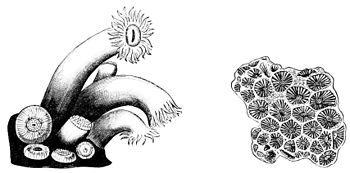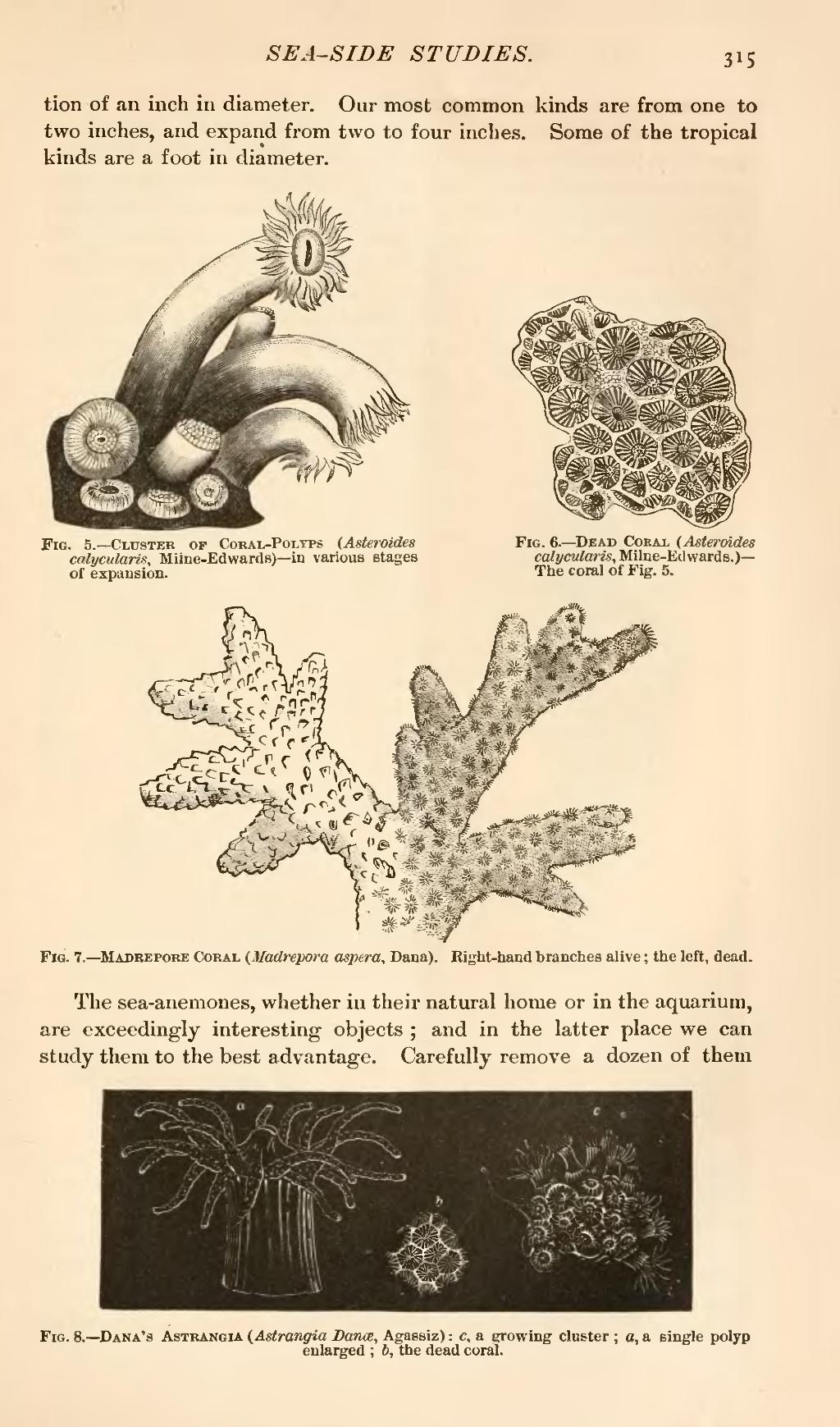This page has been validated.
SEA-SIDE STUDIES.
315
tion of an inch in diameter. Our most common kinds are from one to two inches, and expand from two to four inches. Some of the tropical kinds are a foot in diameter.

| Fig. 5.—Cluster of Coral-Polyps (Asteroides calycularis, Milne-Edwards)—in various stages of expansion. | Fig. 6.—Dead Coral (Asteroides calycularis, Milne-Edwards.)—The coral of Fig. 5. |

Fig. 7.—Madrepore Coral (Madrepora aspera, Dana). Right-hand branches alive; the left, dead.
The sea-anemones, whether in their natural home or in the aquarium, are exceedingly interesting objects; and in the latter place we can study them to the best advantage. Carefully remove a dozen of them

Fig. 8.—Dana's Astrangia (Astrangia Danæ, Agassiz): c, a growing cluster; a, a single polyp enlarged; b, the dead coral.
